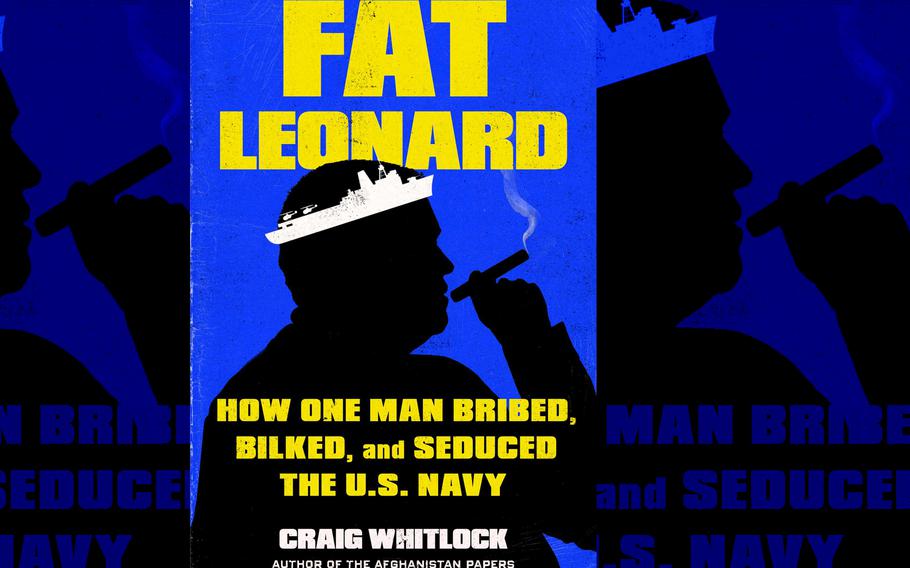
(Simon & Schuster)
For service members and Defense Department civilians, this book is best read after taking mandatory ethics training.
With all the government’s tight rules about gifts from vendors and ethical conduct still fresh in the mind, the reader will marvel at the extent to which senior officers of the Seventh Fleet blithely ignored regulations, common sense and marriage vows while accepting expensive gifts, feasting on $1,000-per-person meals and partying with high-priced hookers in Asian fleshpots.
All that high living came care of an obese Malaysian convicted felon and high school dropout who bilked the Navy out of tens of millions of dollars over two decades.
“Fat Leonard: How One Man Bribed, Bilked, and Seduced the U.S. Navy” is the product of years of reporting by Craig Whitlock, an investigative reporter and former Pentagon correspondent for The Washington Post.
Citing a rich trove of emails, official documents and interviews with key figures, Whitlock traces the meteoric rise of Leonard Francis, whose company, Glenn Defense Marine Asia, provided “husbanding” services — fuel, tugboats, security, waste management, food and water — to 7th Fleet ships, often at inflated prices that few questioned because of his connection to admirals and skippers.
To manage his empire and fend off inquiries by honest Navy contracting officers, Francis, known as “Fat Leonard” because of his 350-pound frame, recruited a network of paid Navy informants who handled his contracts, channeled business his way and kept him informed of classified ship movements.
This isn’t some lowly supply clerk pilfering a few blankets or foodstuffs. This is one of the biggest corruption cases in U.S. history - so big, in fact, that investigators still aren’t sure how much tax money was stolen.
Eventually, Fat Leonard’s excesses caught the attention of the Naval Criminal Investigative Service (NCIS).
Its investigation was complicated by the presence of a paid “mole” in NCIS’ senior ranks and concern over damage to the Navy itself at a time of rising tension in the Western Pacific.
Many aspects of the long-running scandal have been reported incrementally, including Francis’ 2013 arrest, his 2022 escape and his return to the United States last year in a prisoner exchange with Venezuela.
However, seeing the breadth and depth of the scandal laid out in a well-documented, well-written fashion is breathtaking.
A total of 91 active and retired admirals were investigated for taking gifts or for their connections to Francis, but only one — Robert Gilbeau — went to prison.
Those admirals caught up in the investigation included the chief of naval intelligence, the commander of all U.S. military forces in the Pacific, the superintendent of the Naval Academy and two admirals who had served as the chief of naval operations, Whitlock writes.
A total of 34 defendants have been prosecuted in federal court. Another 685 cases involving U.S. service members were referred to the military disciplinary authorities for review but with varied results.
“The Navy adjudicated almost all its cases in the dark,” Whitlock writes.
Many of the officers found to have violated the rules got away with little more than a wrist slap, in part because of prosecutorial misconduct by the Justice Department and, according to the author, a Navy culture that considers snitching on a fellow officer a more heinous offense than blowing the whistle on rampant corruption.
How did Francis get away with it for so long? For one thing, Francis was a master in spotting moral weaknesses — alcohol, women and greed. He was not above collecting embarrassing photos and other evidence to keep his moles loyal to him.
“Francis also exploited a culture of entitlement that infected parts of the U.S. military during the wars in Iraq and Afghanistan,” Whitlock writes. “Accustomed to civilians placing them on a pedestal in gratitude for their service, some Navy officers felt they were owed something extra.”